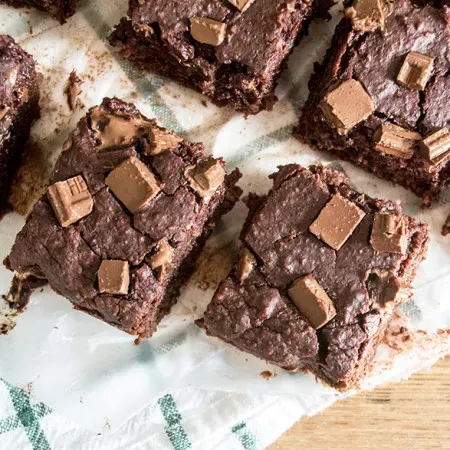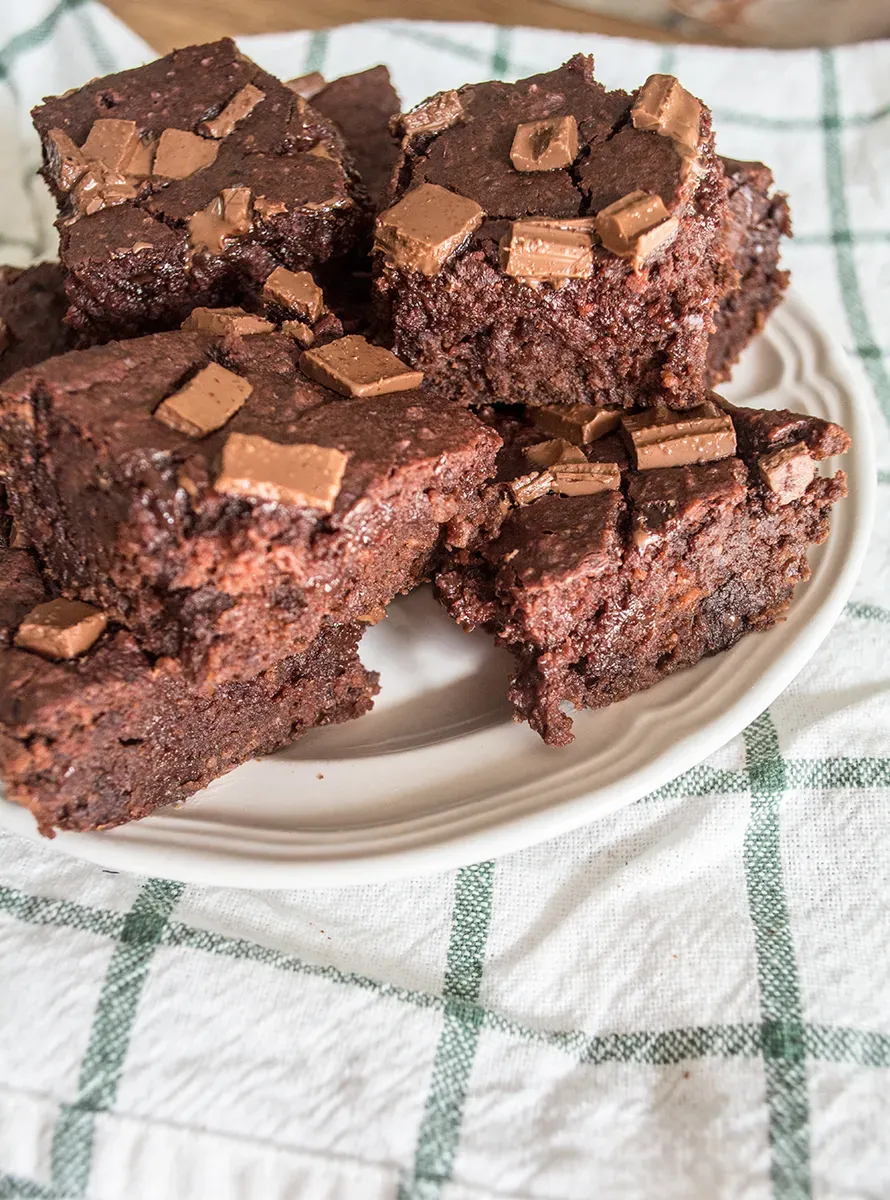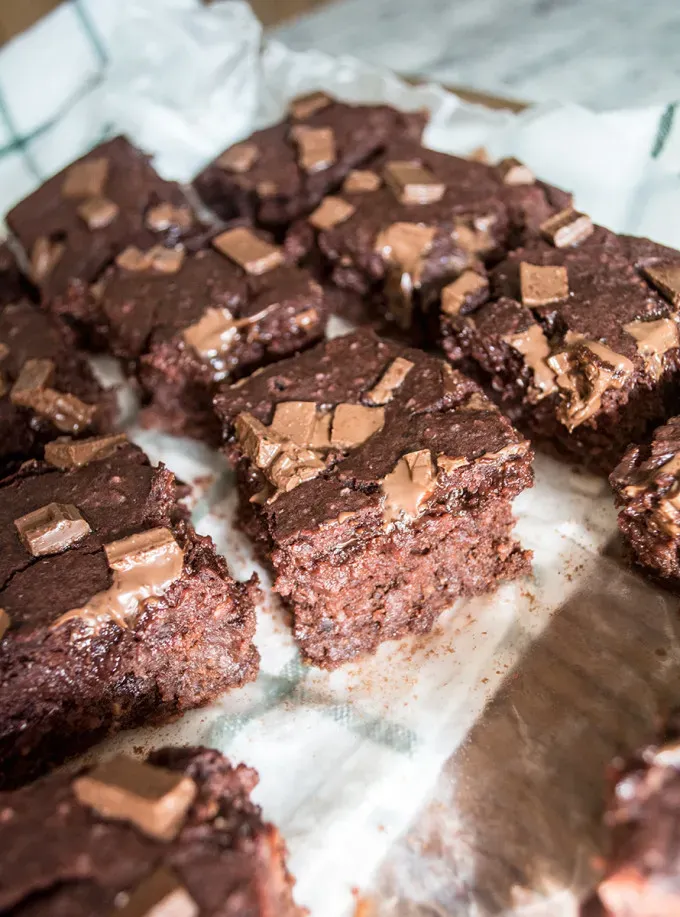Table of Contents
Let's be honest. When someone mentions "black bean and beet brownies," your first thought probably isn't "Oh, delicious!" It's likely more along the lines of "Wait, vegetables in my dessert? Are you serious?" It sounds less like a treat and more like something your overly enthusiastic health-nut aunt might try to sneak onto the dessert table. And honestly, who could blame you for the skepticism? Brownies should be about chocolate, butter, sugar, and that glorious, fudgy texture. Introducing root vegetables and legumes into the mix feels like a culinary crime against cocoa. But here's the thing: black bean and beet brownies have gained a quiet following, not just among the health-conscious, but with anyone looking for a seriously moist, dense, and yes, *fudgy* chocolate experience. The beans and beets disappear into the background, acting as silent partners in creating a texture that's hard to achieve with traditional flour alone. We're going to dig into why this bizarre combination actually works, walk you through how to make these surprisingly good brownies, explore ways to customize them, and finally, confront the big question: do they *really* taste like a proper brownie?
Wait, Beans and Beets? Unpacking the Unusual Brownie Base

Wait, Beans and Beets? Unpacking the Unusual Brownie Base
The Texture Secret: Why Beans and Beets Belong
let's address the elephant in the room: putting black beans and beets into brownies sounds utterly bizarre. You picture a gritty, earthy mess, right? But the reality is far more interesting. Think of these ingredients not as flavor agents, but as structural components. Black beans, when pureed, create a dense, moist paste. This paste mimics the role flour plays in traditional brownies, but without the gluten. It provides that essential heft and chewiness. Beets, on the other hand, are packed with moisture and natural sugars. When roasted or steamed and blended, they add an almost undetectable sweetness and contribute significantly to the fudgy, melt-in-your-mouth texture that brownie purists crave. They act like a secret weapon for ultimate moisture.
Beyond Texture: Sneaking in Nutrition and Color
Beyond their textural contributions, black beans and beets bring some serious nutritional muscle to the party. Black beans are loaded with fiber and protein, turning your typically sugar-laden treat into something with a bit more staying power. Beets add vitamins and antioxidants, plus that gorgeous, deep red pigment that enhances the chocolate's natural color, making the brownies look even richer. The beauty of this pairing is how effectively their distinct flavors are masked by strong cocoa powder and other typical brownie ingredients like vanilla and sweetener. You're not biting into a bean burrito or a beet salad; you're getting a deep, dark chocolate experience with an unexpectedly pleasant density.
So, what exactly do these ingredients bring to the table (or rather, the brownie pan)?
- Black Beans: Provide structure, density, fiber, and protein.
- Beets: Add moisture, natural sweetness, antioxidants, and enhance color.
Crafting Perfect Black Bean and Beet Brownies: Tips and Tricks

Crafting Perfect Black Bean and Beet Brownies: Tips and Tricks
Prepping Your Powerhouse Ingredients
Alright, so you're sold on the idea that black beans and beets aren't just for salads anymore. Now, how do you actually get them brownie-ready? This isn't rocket science, but a little prep makes a big difference. For the black beans, canned is totally fine – just make sure you rinse them *really* well. You want to wash away that starchy liquid that gives them that distinct "canned bean" flavor. I've forgotten this step once, and let's just say the brownies had an...unintended savory note. For the beets, roasting or steaming is your best bet. Boiling can make them too watery. Roasting concentrates their sweetness and makes them easier to peel and blend. Peel them after they're cooked and cooled slightly. Get them nice and soft; you're aiming for a silky smooth puree, not chunky bits in your brownie.
Blending for Brownie Success
The key to hiding the fact that you've put vegetables in your dessert is blending. You need a good food processor or a high-powered blender. Throw in your rinsed black beans and cooked, peeled beets. Blend until that mixture is unbelievably smooth. We're talking baby food smooth, maybe even smoother. Any graininess from the beans or fibrous bits from the beets will mess up that coveted fudgy texture. Once your bean and beet base is ready, you'll typically mix it with your wet ingredients like eggs, oil (or applesauce for a lighter version), vanilla extract, and your sweetener. Then, gently fold in your dry ingredients – cocoa powder, baking powder, salt, maybe some instant coffee for depth. Don't overmix once the dry ingredients are added; that can lead to a tougher brownie.
- Rinse canned black beans thoroughly.
- Roast or steam beets until very tender.
- Peel beets after cooking and cooling.
- Blend beans and beets to a super smooth puree.
- Do not overmix the batter after adding dry ingredients.
Elevating Your Black Bean and Beet Brownies: Addins and Variations

Elevating Your Black Bean and Beet Brownies: Addins and Variations
Make Them Your Own: Fun Add-ins and Flavor Twists
So, you've got the basic black bean and beet brownies down, and maybe you're thinking, " not bad." But this is where you can really make them sing. The base is a blank canvas, a deep, dark starting point just begging for some personality. Think beyond just throwing in standard chocolate chips, though those are always a win. Want more crunch? Walnuts, pecans, or even toasted coconut flakes work beautifully. Feeling fancy? Swirl in some peanut butter or a dollop of raspberry jam before baking. A pinch of cayenne adds a surprising kick that complements the chocolate without being overwhelming. You can also play with extracts – peppermint for a festive touch, almond for a nutty depth. Don't be afraid to experiment; the robust chocolate flavor can handle a lot.
- Chocolate chips (dark, milk, or white)
- Chopped nuts (walnuts, pecans, almonds)
- Peanut butter or other nut butter swirls
- Raspberry or cherry jam swirls
- Toasted coconut flakes
- A pinch of cayenne pepper
- Peppermint or almond extract
- Instant coffee granules for mocha flavor
The Verdict: Do Black Bean and Beet Brownies Actually Taste Good?

The Verdict: Do Black Bean and Beet Brownies Actually Taste Good?
Confronting the Skepticism Head-On
the moment of truth. After all this talk about pureeing vegetables and legumes into a dessert batter, the burning question remains: do black bean and beet brownies actually taste good? Let's not pretend they are identical twins to a classic flour-and-butter brownie. They aren't. If you're expecting that exact crumbly edge and slightly drier center, you'll be disappointed. However, if you're open to a different, intensely moist, and unequivocally fudgy experience, you might be pleasantly surprised. The first time I pulled a batch from the oven, I was genuinely nervous. I took a bite, bracing for a weird, earthy flavor. Instead, I got a dense, rich chocolate hit followed by a texture so soft and yielding it felt like biting into pure fudge. The texture is where these brownies truly shine; it's their superpower.
Flavor Profile: More Chocolate, Less Garden
So, what about the taste of the beans and beets themselves? Honestly? You barely taste them. The powerful flavor of cocoa powder, vanilla extract, and whatever sweetener you use completely dominates. The beans are essentially flavor neutral once rinsed and blended, serving purely a structural purpose. The beets offer a subtle, earthy sweetness that actually complements the deep notes of the chocolate, similar to how coffee enhances chocolate flavor. They don't scream "I'm a vegetable!" They whisper "I'm making this incredibly moist." Think of them as silent partners in flavor development, adding depth without announcing their presence. It's a bit like adding a pinch of salt to caramel – it enhances the main flavor without tasting salty.
- Texture: Incredibly fudgy and dense.
- Bean Flavor: Practically undetectable when rinsed and blended.
- Beet Flavor: Adds subtle sweetness and depth, enhancing chocolate.
- Overall Taste: Rich, deep chocolate is the dominant flavor.
- Mouthfeel: Very moist and tender, less crumbly than traditional brownies.
The Final Assessment: Who Should Try These?
So, are black bean and beet brownies for everyone? Probably not if you're a die-hard purist who believes a brownie must contain flour and butter to earn the name. But if you're looking for a seriously decadent, moist, and fudgy chocolate treat that happens to pack a little extra fiber and nutrients, give them a shot. They are particularly great for those avoiding gluten or looking to reduce refined flour intake. They satisfy that deep chocolate craving without feeling heavy or overly sweet. They are a legitimate dessert, not just a "healthy alternative" that tastes like a compromise. You might just find yourself converted, secretly enjoying your vegetable-powered fudge bombs.
The Final Word on Black Bean and Beet Brownies
So, after all the skepticism, the blending, and the baking, where do we land on black bean and beet brownies? They aren't some magical health food that tastes exactly like a classic bakery brownie while simultaneously curing all your ailments. Let's be realistic. But what they *are* is a genuinely good, seriously fudgy, and surprisingly rich chocolate dessert. The beans and beets perform a disappearing act, leaving behind a texture that's moist and dense without relying on excessive amounts of butter or flour. If you're looking for a way to add a little extra fiber and nutrients to your treat, or simply want to experiment with achieving ultimate fudginess through unconventional means, these are absolutely worth a shot. They might just surprise you.
